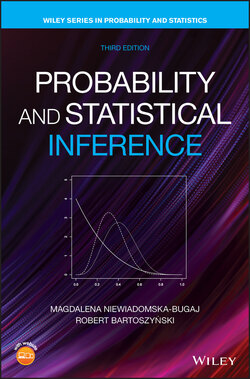Читать книгу Probability and Statistical Inference - Robert Bartoszynski - Страница 40
Example 1.21
ОглавлениеA point moves randomly on the plane, and its location is recorded at some time . The outcome of this experiment is the pair of coordinates of the observed location of the point (e.g., imagine here the location of a particle of dust in a liquid, tossed about by random hits from molecules of the medium, and performing Brownian motion; or imagine a location of a previously marked bird at the time of its capture in a bird migration study or the ages of both husband and wife at the time one of them dies).
In any study of this kind (regardless of its ultimate purpose), the “natural” sample space is a plane or part of the plane, (the positive quadrant, etc.). The “simple” events here are of the form , that is, rectangles with sides parallel to the axes. The reason for distinguishing these events as “simple” is that, as will be explained in later chapters, it is often easy to assign probabilities to these events. The reason for the particular configuration of strict and nonstrict inequalities (i.e., north and east side included, south and west side excluded) will also become apparent from the analysis below. To simplify the language, we will call such events Rectangles, and use a capital letter to signify the specific assumption about which sides are included and which are not. Naturally, we will allow for infinite Rectangles, such as .
It is easy to determine the field generated by all Rectangles: These are events that result from finite operations on Rectangles. Clearly, the complement of a Rectangle is a union of at most eight disjoint (infinite) Rectangles (see Figure 1.7), whereas the intersection of Rectangles is again a Rectangle (or is empty). Since unions are reduced to intersections of complements by De Morgan's laws, every element of the smallest field containing all Rectangles is the union of a finite number of disjoint Rectangles. On the other hand, there exist events that do not belong to this field of events. As a simple example, one might be interested in the event that the point lies within distance from some fixed point (from the initial location of the particle, the point of release of the bird, etc.). This event is a circle on the plane, and hence a subset of which is not decomposable into a finite number of Rectangles. On the other hand, a circle does belong to the ‐field spanned by Rectangles: it is representable as a countable union of Rectangles, or equivalently, as an infinite intersection of sets built up of Rectangles.
Figure 1.7 Complement of a Rectangle.
Similarly, in this example there are other events, which are not in the field generated by Rectangles and which could be considered, such as triangles, rectangles with sides not parallel to the axes, and ellipses.
